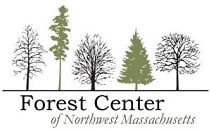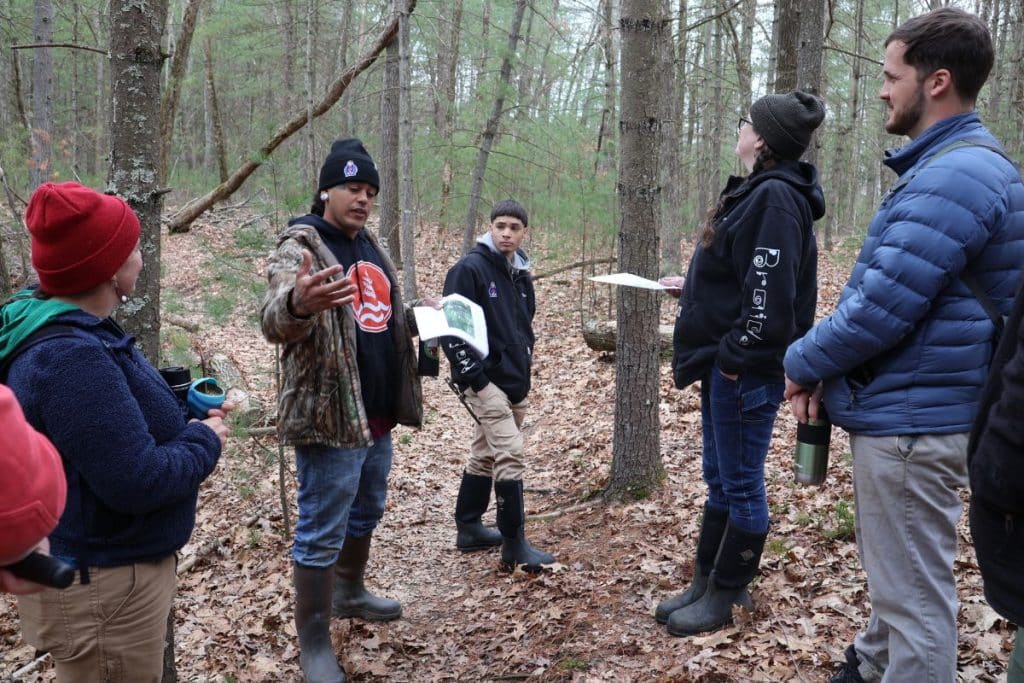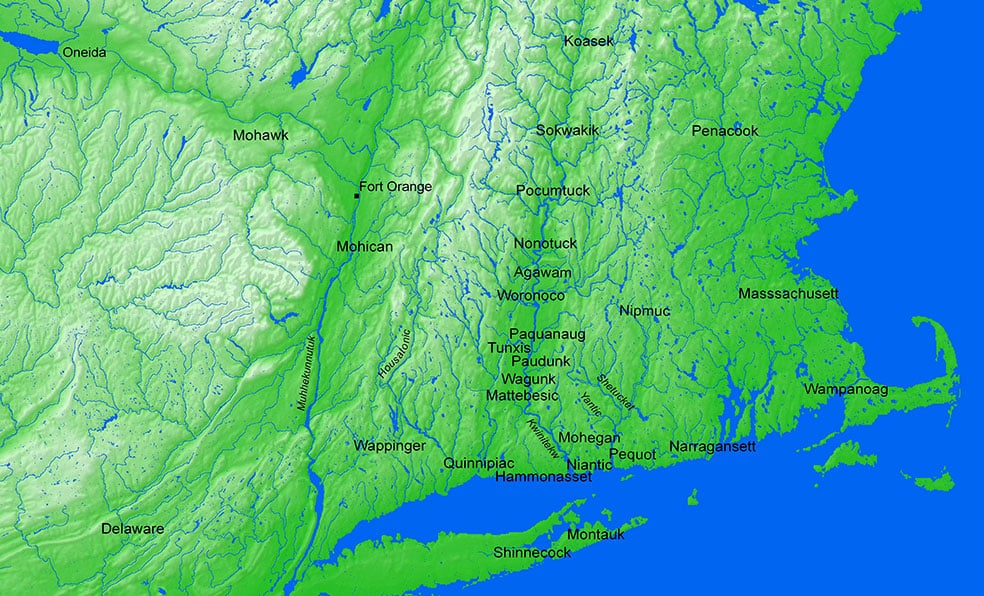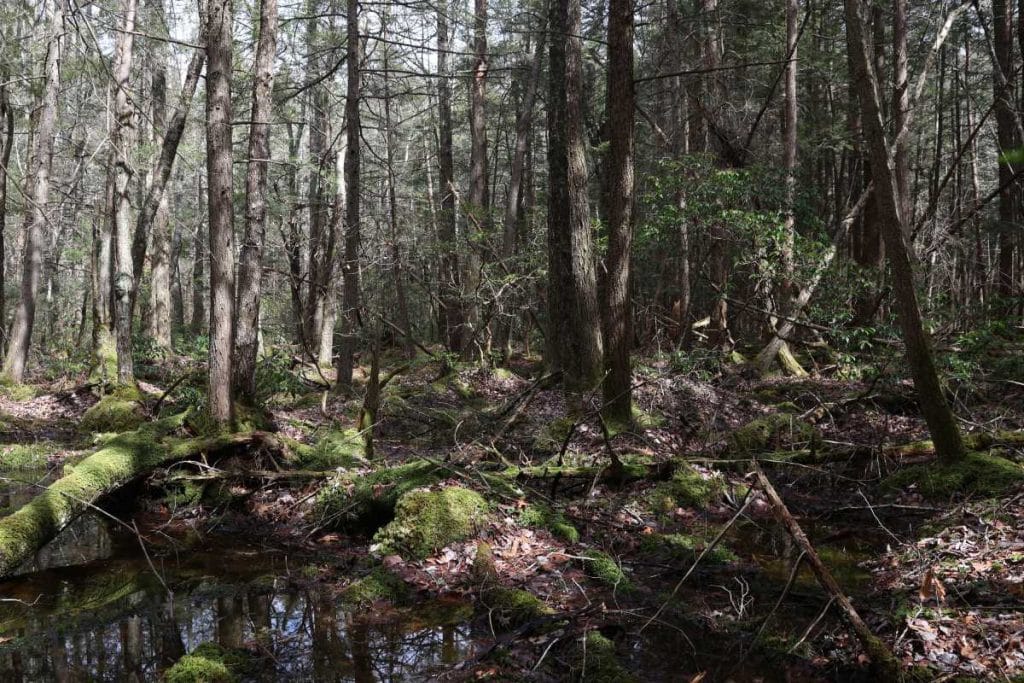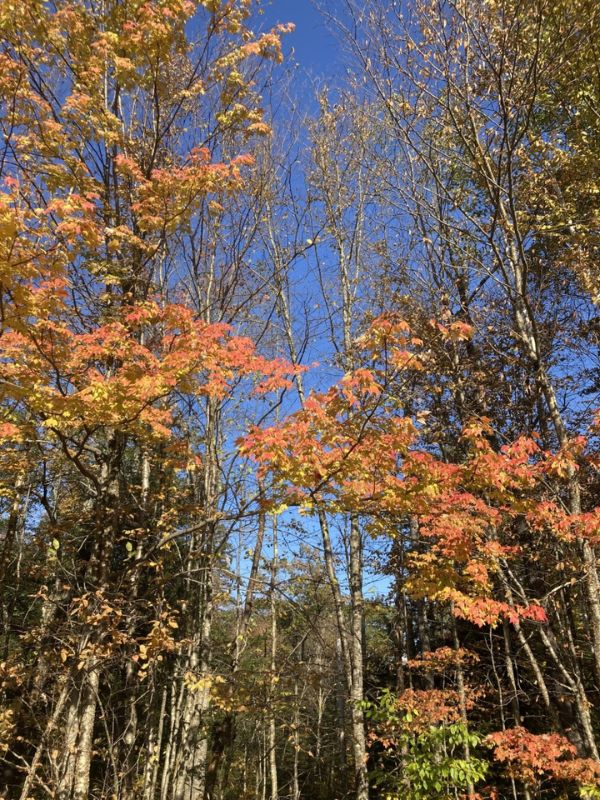Native Land
A common myth, sometimes referred to as “the pristine myth,” has been perpetuated by colonization; it is the idea that the forests and lands of this area, and the Americas at-large, were relatively untouched prior to colonization (You can learn more about this idea in Charles C. Mann’s article and book, 1491) . Much to the contrary, the Tribes across the region, including the Pocumtuc, Nonotuck, Stockbridge Munsee Band of Mohicans, Nipmuc, and Abenaki, (Learn whose Native land you’re on) whose territories and trade routes made up what is often referred to today as Western Massachusetts, had (and continue to have) complex societies with meaningful cultural practices.
This map illustrates the Indigenous territory that now constitutes southern New England, highlighting the tribal communities located along the Kwinitekw (Connecticut River) while also noting some of the other surrounding tribal nations.
Credit: Map created by Jenny Davis and Lisa Brooks, using ArcGIS 9.2, courtesy of Harvard University. From Lisa Brooks, The Common Pot: the Recovery of Native Space in the Northeast (University of Minnesota Press 2008).
For more information, see: https://lbrooks.people.amherst.edu/thecommonpot/map7.html
Native Peoples actively stewarded the land in a manner of reciprocity, which means the people cared for the land, and the land cared for them in return. In their care of the land, they promoted forest health, while encouraging the growth of food, medicine, and other culturally significant plant relatives—through strategies such as the stewardship of waterways and the use of large-scale fire. There is a false narrative that Indigenous Peoples were “hardly present” across the landscape and that the land was “untouched.” These narratives have been used to downplay, justify, or dismiss the genocide and violent displacement of First Nations Peoples. These sentiments only perpetuate systems of oppression.
Indigenous Peoples continue to reside in Northwest Massachusetts and are still at the forefront of environmental protection, ecological stewardship, and climate mitigation. Members of the Stockbridge Munsee Band of Mohicans, Nipmuc, and Abenaki Tribes actively reside in the region and help to care for our communities and land. However, displacement and violence continue to this day, including land control and access policies that continue to inflict trauma on the region’s Indigenous residents. Today, Indigenous Peoples are deprived of access to land, and in turn, restricted from ceremonial and cultural practices due to policies, such as local ordinances that restrict what can be done on the land, and misconceptions, such as the lack of awareness and understanding of Treaty Rights. These conditions represent a significant barrier to climate and community resilience, which must be rectified to create communities and ecosystems that can withstand the impacts of climate change and ultimately thrive.
Restoring Cultural Resilience
Many non-indigenous people working in forest conservation and the environmental movement have begun to recognize and acknowledge injustices inflicted upon Indigenous Peoples in the past, including the results of early conservation efforts that often benefited a wealthy few to the detriment of the people living there at the time.
As our society grapples with these realities, those working to address climate change are realizing that the region’s Native peoples need to be part of conversations about forest stewardship and pursuing natural climate solutions, while also promoting justice, equity and cultural resilience.
As communities work to plan and prepare for climate change, simultaneously addressing forest health threats, it is essential to invite and involve local tribal members in the planning and decision-making process. This requires long-term efforts to build reciprocal relationships across cultures, while working to restore land access and providing direct support to Indigenous community members who are actively engaging in caring for land and culture.
Guidelines for Collaboration
Recognition and understanding are only the first step. We must also work to collaborate as well as share power. Our region and communities can learn from other successful collaborative efforts such as the Indian Art Research Center’s Guidelines for Collaboration and Nature United’s Rights-Based, Indigenous-led conservation efforts.
Indian Arts Research Center: Guidelines for Collaboration
The Indian Arts Research Center developed ‘Guidelines for Collaboration’ through a three-year collaborative between Native and non-Native museum professionals, cultural leaders, and artists. Originally developed for collaboration with museums, the documents that resulted from this effort create a powerful story of how we can collaborate across cultures in a restorative manner. Some lessons learned that may be directly applicable to supporting collaborative forest stewardship across our region include:
- Consider that Indigenous communities may have specific values, rules, protocols, or practices that you will need to learn about and work to accommodate as part of your collaboration.
- Be willing to “Listen, Learn, and Don’t Take it Personally”: Past and current practices may bring up noteworthy emotions for Native Peoples interacting with this work.
- Community Representatives are regarded as experts but they speak from their own perspective so it shouldn’t be assumed they are speaking for their community in general.
- Be flexible and prepared to go with the flow. Expectations around timelines may look different when working with Native communities. Cultural and community needs will be prioritized, even before previously scheduled meetings.
- Compensation: Paying Indigenous people to engage with this work is essential. You may also provide direct support by sharing your expertise when invited.
- Avoiding Appropriation: Be sure to discuss and agree how collected information will be used and shared.
These lessons have been adapted from the Guidelines for Collaboration with permission: “Indian Arts Research Center. 2019.. Facilitated by Landis Smith, Cynthia Chavez Lamar, and Brian Vallo. Santa Fe, NM: School for Advanced Research.
Nature United: Indigenous-Led Conservation
Nature United is an organization that focuses on Indigenous Partnership and supports Indigenous-led conservation. Learn more about how the organization is working to center Indigenous Rights and Authority in Conservation.
The organization has created an overview of their efforts to work in direct partnership with Indigenous Peoples. The guide identifies six key characteristics for relationship building:
- Being Partner-Centered: Partnerships should be formed based on trust and shared interests that are identified through relationship building.
- Project Co-creation: Seek to understand community needs and co-create a plan that details community priorities.
- Community Diversity & Engagement: Indigenous communities are diverse. A diversity of perspectives must be heard and respected.
- Reciprocity & Mutual Learning: Partnerships with Indigenous communities are opportunities for mutual learning, sharing, and receiving.
- Clear Communication & Accountability: Establish lines of communication and commit to agreed-upon roles.
- Flexibility & Adaptability: Adjust to the needs and constraints of community. Be aware of competing priorities. Do not rush projects.
Indigenous Ecology & Land Stewardship
Successfully stewarding our region’s forests requires that we find ways to learn from, support, and cooperate with Indigenous Ecology and Land Stewardship. To support ongoing conversations about collaboration in land stewardship and ecology, the Ohketeau Cultural Center and the Forest Climate Resilience Program held an Indigenous Ecology and Land Stewardship Panel in the spring of 2023.
There are many Indigenous-led initiatives that communities can help to support as they identify strategies to care for their forests and build climate resilience. Communities can reach out to learn how to support these efforts.
Native Land Conservancy: An Inter-Tribal Land Trust that works to protect land for cultural use and stewardship. Consider a Cultural Respect Agreement. Learn more from the video below.
Nipmuc Land Project: A Nipmuc-led initiative to rematriate a 100-acre farm for the Nipmuc Tribe and provide education and inter-generational opportunities to learn about the land and caring for food crops.
Eastern Woodlands Rematriation: A grassroots Collective of Tribal peoples restoring Indigenous foodways in the Northeast.
Sovereign Science: A network of Indigenous people and allies who perform water quality tests across Turtle Island (North America) to create a set of “baselines,” including soil and air quality and plant nutrient levels.
The Native Land content above represents a synthesis of ideas put forward across a series of meetings and workshops run by the Ohketeau Cultural Center in collaboration with the Forest Climate Resilience Program. Ideas and perspectives shared by the following people were integrated into this section. Please support the work of these individuals and their respective organizations.
- Rhonda Anderson, Iñupiaq – Athabascan from Alaska, Ohketeau Cultural Center
- Andre StrongBearHeart Gaines-Roberson, Jr., (Minikesu Mosq Metah), Nipmuc, No Loose Braids
- Ramona Peters, Mashpee Wampanoag, Native Land Conservancy
- Jim Enote, Zuni, Colorado Plateau Foundation
- Keshia Talking Waters De Freece Lawrence, Ramapough Lenape Munsee, Sovereign Science
- Keely Curliss, Nipmuc, Nipmuc Land Project
- Kristen Wyman, Nipmuc, Eastern Woodlands Rematriation
People and Massachusetts Forests
People and forests have been intimately connected for thousands of years. The People and Massachusetts Forests timeline tells the story of human interactions with forests over time. These legacies demonstrate our long-standing relationships with the land (both positive and negative) and highlight more recent impacts on forests that have disrupted natural processes. Understanding these legacies allows us to better appreciate our obligation to care for the forests.
Timeline of People and Massachusetts Forests
Indigenous Peoples have lived in and shaped our forests since the retreat of glaciers nearly 20,000 years ago; gathering dead wood from the understory and deliberate use of fire are two examples of forest stewardship practices that existed before European colonization; many coastal areas and river valleys were cleared for agriculture.
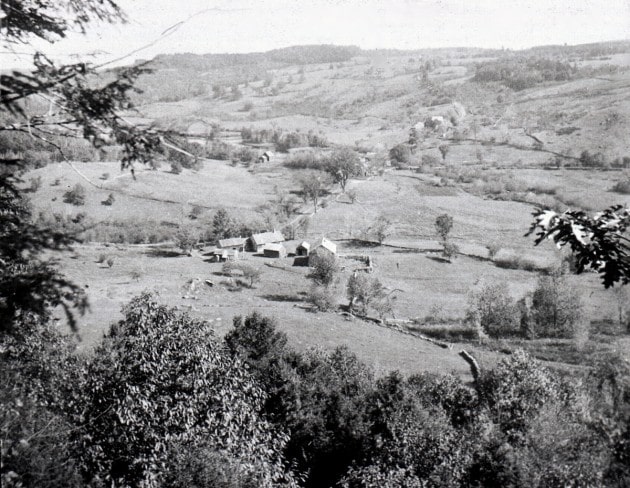
European colonization increased forest clearing for farms; at the peak of agriculture in the mid-nineteenth century, 70% of Massachusetts was deforested; large amounts of forest carbon were released to the atmosphere during this period and forest-dependent wildlife populations were greatly reduced.
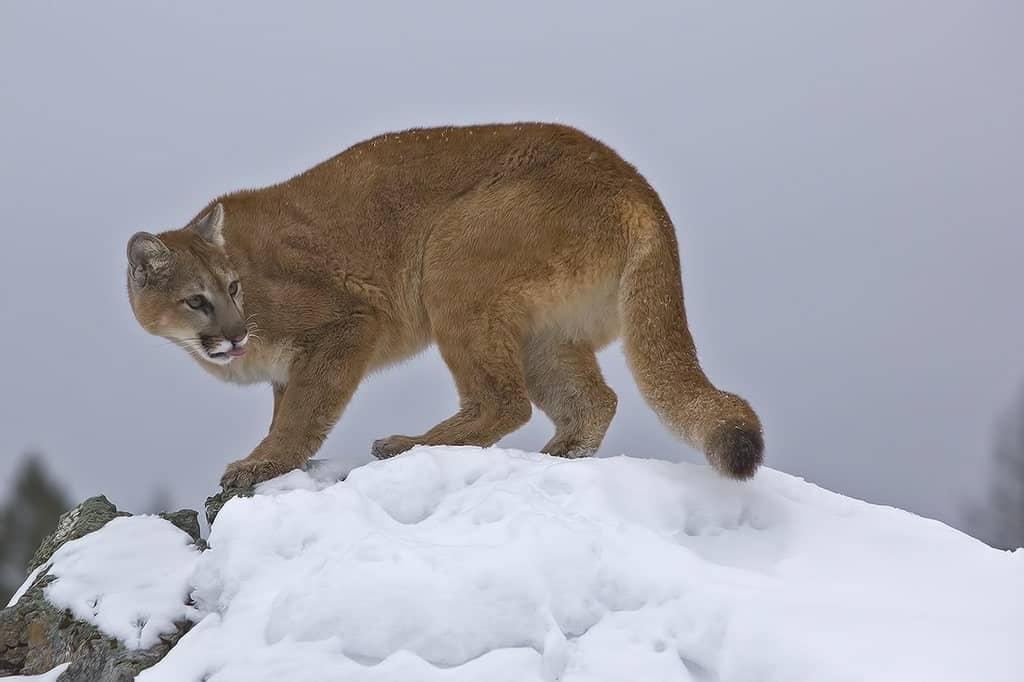
With abandonment of farms, forests returned, although modified considerably by the agricultural legacies that remain to this day (e.g., forests lacking physical complexity [trees that differ in age, size, and distribution], lack of coarse woody debris on the forest floor, loss of soil organic carbon and depleted soil properties, etc.); ecosystem benefits and wildlife have largely returned, although large predators, such as the mountain lion (Puma concolor) and the gray wolf (Canis lupus), have never re-established populations, since being extirpated in Massachusetts in the mid-1800s.
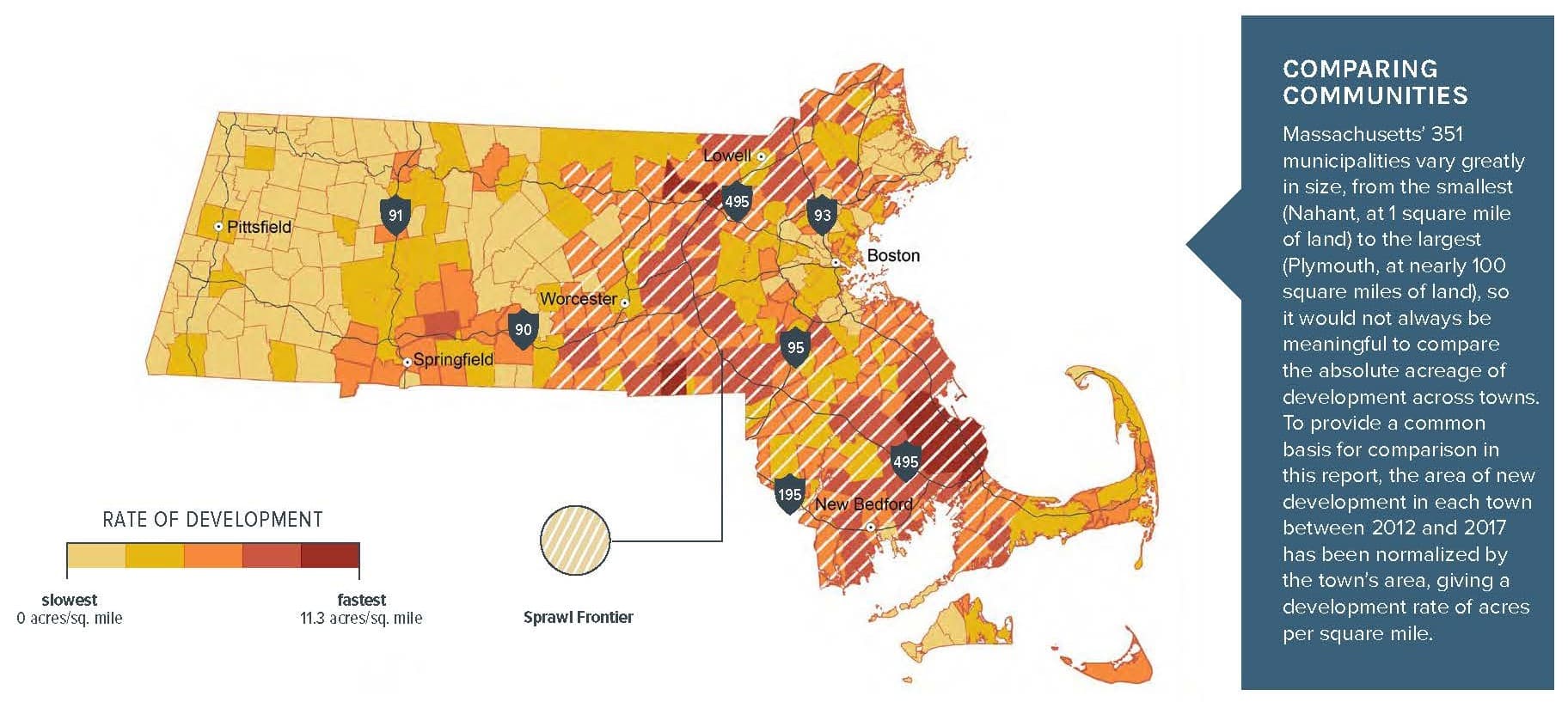
Second-growth forests, or those forests that have regrown since agricultural abandonment or post-harvest, have often been harvested multiple times; historically, it was not uncommon for these forests to have been high-graded, which is the practice of removing only the highest dollar value, and often largest, trees and leaving trees of poorer quality, and those considered lower-valued species; this resulted in a shifts in species composition of the forest and leaving less vigorous (slower growing) trees; these forests are especially prone to future stressors including climatic changes and disturbances. Peaking at 70% forest in the late-twentieth century, forest land has now declined to 60% (3.2 million acres) as forests are increasingly converted to both residential and commercial development, including solar arrays.
Today’s forests in Massachusetts are quite uniform in age and structure, reflecting past cycles of field abandonment and logging. Most forests are 65-95 years in age with less than 4% classified as young forest and less than 0.001 % old-growth, which are those forests that were never directly affected by intensive human land use, such as those implemented by Europeans (D’Amato and Catanzaro 2022).
Given the many impacts humans have had on forests there are multiple barriers to our forests' ability to be self-sustaining. However, there are many strategies to promote healthy forests and overcome the challenges presented by both past land impacts as well as human-driven climate change. There’s no one-size-fits-all approach but there’s plenty more to learn about your community’s options for forest stewardship.
Protecting the Future Forest
A diversity of stewardship approaches will ensure a future forest condition that continues to provide our communities with the ecological, health and cultural benefits upon which we currently rely. The Forest Climate Resilience Program collaborates with our partners to support both wildlands as well as active, sustainable forest management (Woodlands). With both strategies, keeping forests as forests is the priority — permanent conservation restrictions can help protect both Wildlands and Woodlands.
To learn what strategies might be right for your community or forest, consider finding a technical assistance program or getting a Forest Stewardship Climate or Bird Plan.
- Wildlands stewardship involves the protection of forests and the use of either no-management or “passive management” strategies. This often involves strategies such as forest reserves or the designation of legacy trees or no-management areas within a forest stewardship plan.
- Woodlands stewardship often uses active management strategies to care for the forest. Climate-smart and wildlife-friendly practices can address forest health threats while providing wood products we depend on and supporting working forests. These interventions can represent a one-time occurrence to address a specific threat, or longer-term strategies implemented over time that might include more of a focus on wood production.
Supporting Resources
Quick Navigation
Forest Stewardship Funding
No matter what goals you might have for your forest, there are a number of programs that can provide financial support and assistance.
